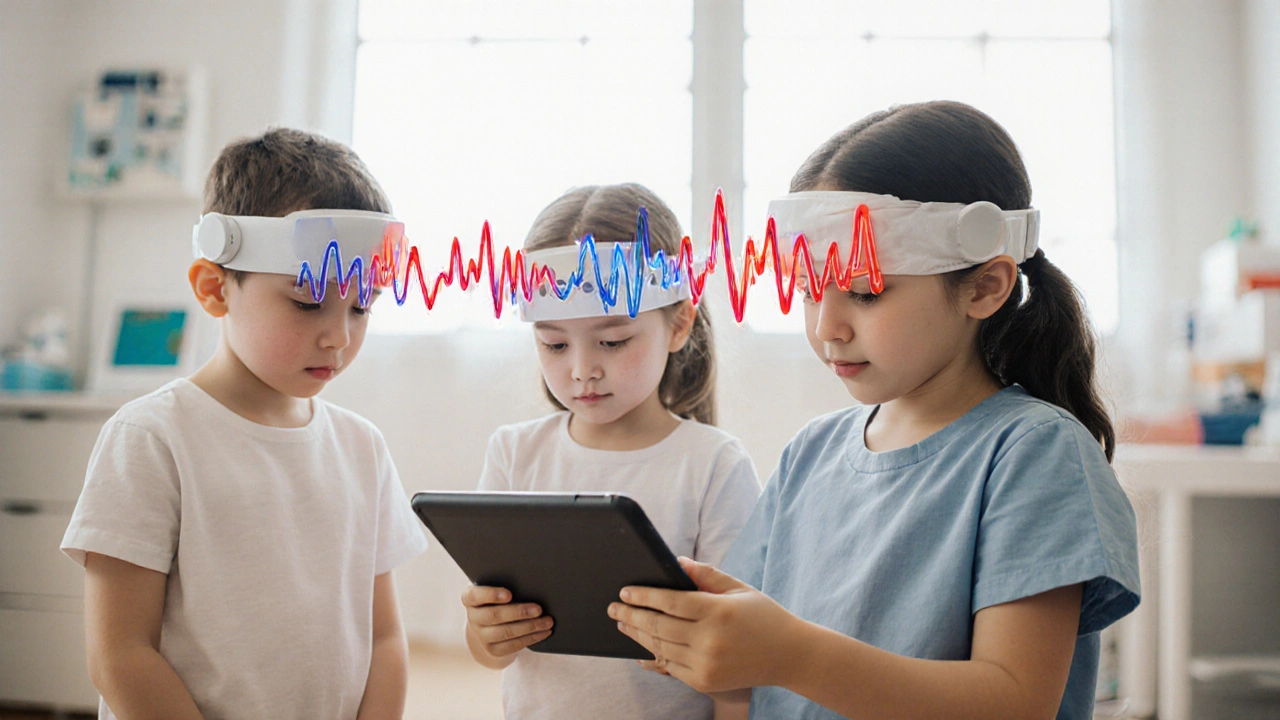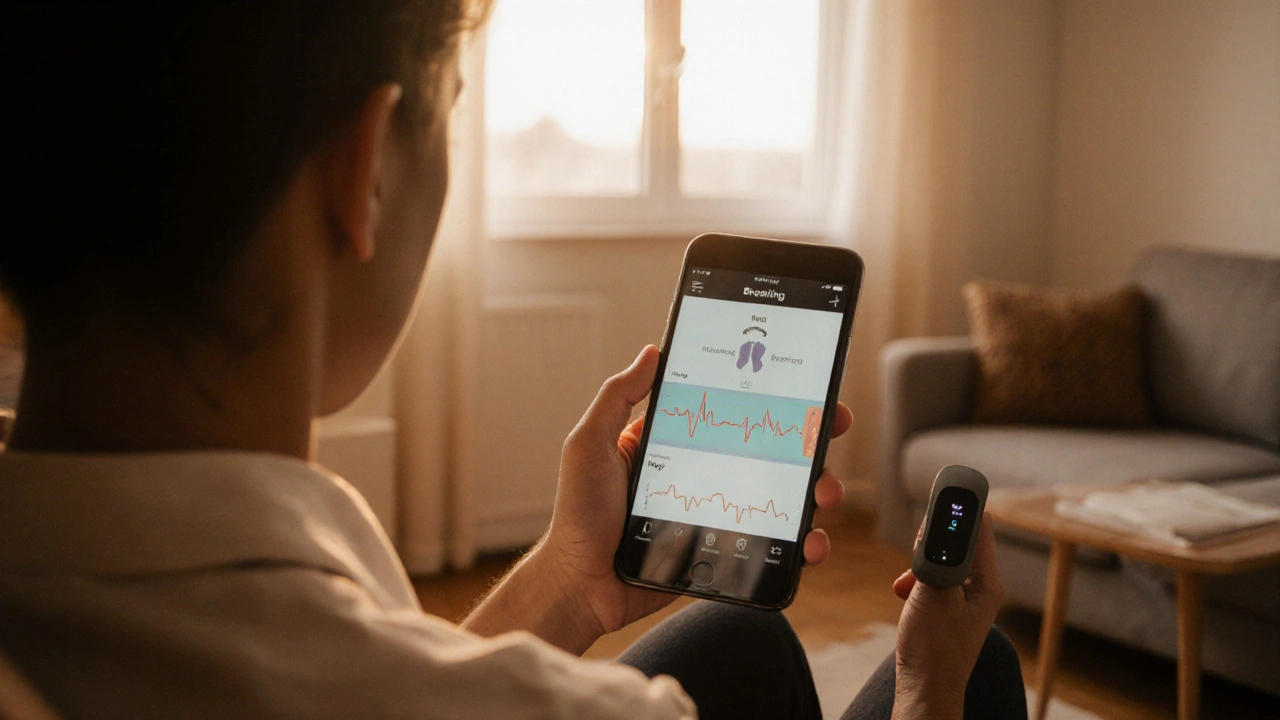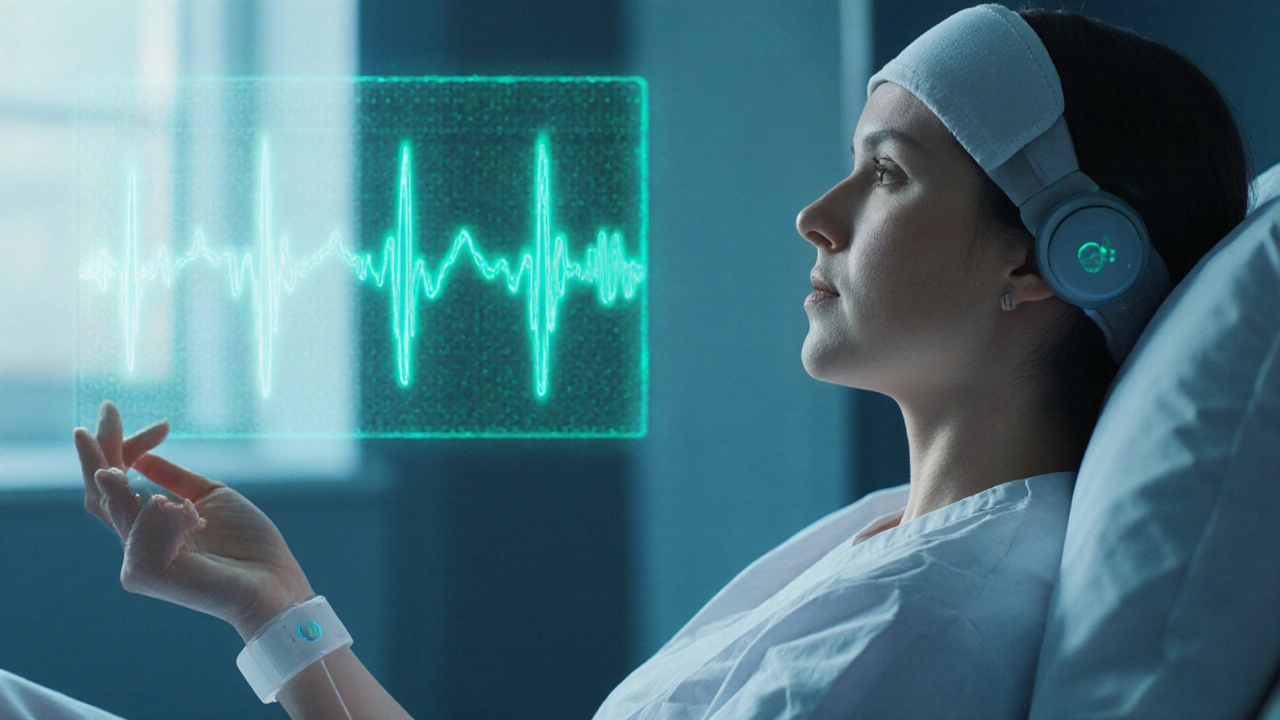Stress Level Estimator
Biofeedback Stress Assessment
How This Works
Based on biofeedback principles from the article: Your heart rate variability (HRV) shows how well your body handles stress. Lower HRV means higher stress.
Your stress level will appear here after calculation
Imagine being able to see your own heartbeat on a screen-and then learning, in real time, how to slow it down just by breathing deeper. This isn’t science fiction. It’s biofeedback, and it’s already changing how doctors treat everything from chronic pain to anxiety disorders.
What Biofeedback Actually Is
Biofeedback is a technique that uses sensors to measure your body’s invisible signals-like heart rate, muscle tension, skin temperature, or brainwave patterns-and turns them into visual or sound cues you can understand. It’s not magic. It’s math and biology working together.
You don’t need to be a tech expert to use it. A simple biofeedback device might be a wristband that beeps faster when your heart races. Or a headband that shows your brain’s calmness level as a color on an app. The goal? To help you notice patterns you’ve always ignored-and then teach your body to change them.
Unlike pills or surgery, biofeedback doesn’t force your body to do anything. It just gives you a mirror. And once you see what’s happening inside, you can start making smarter choices.
How It’s Being Used in Hospitals Today
Hospitals in Melbourne, Boston, and Berlin are now using biofeedback as a first-line tool-not a last resort. For patients with high blood pressure, wearable sensors track heart rate variability during breathing exercises. Over eight weeks, many reduce their medication dosage without losing control of their numbers.
In pediatric clinics, kids with ADHD use EEG-based biofeedback to train their brains to focus. One study from the University of Melbourne tracked 120 children over six months. Those who did 20 sessions of neurofeedback showed improvements in attention scores equal to those on stimulant meds-but with no side effects.
Chronic pain patients, especially those with fibromyalgia or lower back issues, are using electromyography (EMG) biofeedback to retrain tense muscles. Instead of relying on opioids, they learn to relax specific muscle groups using real-time feedback. One 2024 trial found that 68% of participants reduced their painkiller use by half or more after six weeks of biofeedback training.
Why It Works Better Than You Think
The biggest myth about biofeedback is that it’s just relaxation. It’s not. It’s neuroplasticity in action.
Your brain is wired to respond to feedback. If you see your stress levels spike every time you check emails before bed, your brain starts to associate that behavior with danger. With biofeedback, you can break that loop. You learn to pause, breathe, and reset before your body goes into fight-or-flight mode.
It’s like learning to ride a bike. At first, you wobble. But your brain gets better at adjusting with every fall. Biofeedback gives you the training wheels-and the data-to build that skill without guessing.
And it’s not just for adults. Schools in Sydney are now using simple heart rate monitors during exams to help anxious students calm down. Teachers report fewer panic attacks and better test results. The tech is cheap, non-invasive, and scalable.

The Tech Behind the Scenes
There are three main types of biofeedback used in clinical settings:
- Electromyography (EMG) - Measures muscle tension. Used for headaches, jaw clenching, and back pain.
- Thermal biofeedback - Tracks skin temperature. Helps with Raynaud’s syndrome and stress-related circulation issues.
- Neurofeedback (EEG) - Monitors brainwaves. Used for ADHD, PTSD, insomnia, and epilepsy.
Most devices now connect to smartphones. Apps like BioBase and HeartMath offer guided sessions that adapt to your progress. Some even sync with smartwatches to give real-time alerts when your stress spikes.
And it’s getting smarter. AI-powered systems now analyze patterns over weeks and suggest personalized exercises. One system in Germany reduced anxiety symptoms in 82% of users by adjusting breathing rhythms based on their unique physiological response.
Who Benefits Most?
Biofeedback isn’t a cure-all-but it’s incredibly effective for certain groups:
- People with chronic stress or burnout
- Those with anxiety, PTSD, or panic disorders
- Patients recovering from stroke or traumatic brain injury
- Athletes looking to optimize recovery and focus
- People with migraines or tension headaches
It’s also great for people who don’t respond well to medication-or who want to avoid it. One nurse in Adelaide stopped taking anti-anxiety pills after six weeks of biofeedback. She now uses a handheld device daily. "It’s like having a therapist in my pocket," she said.

Getting Started Without Breaking the Bank
You don’t need a hospital visit to try biofeedback. Many affordable tools are available:
- Heart rate variability monitors - Like the Elite HRV or Apple Watch with third-party apps. Cost: $50-$150.
- EEG headbands - Muse and NeuroSky offer basic neurofeedback for under $200.
- Free apps - Breathwrk and Calm now include biofeedback-guided breathing with real-time heart rate tracking.
Start simple: Use your phone’s camera to track your pulse (some apps do this). Sit quietly for five minutes. Watch how your heart rate changes when you breathe in for four counts, hold for four, exhale for six. Do that daily for a week. You’ll start to notice patterns.
That’s biofeedback. No machine needed. Just awareness.
What’s Next?
The future of biofeedback is integration. Imagine a smart home that adjusts lighting and temperature based on your stress levels. Or a car that slows down and plays calming music when it detects your heart rate climbing. These aren’t far off.
Insurance companies are starting to cover biofeedback sessions. In Australia, Medicare now subsidizes neurofeedback for PTSD under certain conditions. More providers are training in biofeedback techniques. The field is growing fast-and it’s not just for clinics anymore.
Biofeedback is turning passive patients into active participants. Instead of waiting for symptoms to get worse, people are learning to catch them early. And that’s changing healthcare-from the inside out.
Is biofeedback scientifically proven?
Yes. Over 1,000 peer-reviewed studies support biofeedback for conditions like hypertension, migraines, anxiety, and chronic pain. The American Psychological Association recognizes it as an evidence-based treatment. NASA even uses it to help astronauts manage stress in space.
How long does it take to see results?
Most people notice changes within 4-8 sessions. For chronic issues like pain or anxiety, 10-20 sessions over 6-12 weeks is typical. Like exercise, consistency matters more than intensity. Daily 10-minute sessions often work better than one long weekly session.
Can I use biofeedback with other treatments?
Absolutely. Biofeedback works well alongside therapy, medication, and lifestyle changes. Many therapists use it to reinforce CBT techniques. Patients on pain meds often reduce their dosage safely with biofeedback training. It’s a complement-not a replacement.
Are there any risks or side effects?
No serious side effects have been reported. Some people feel slightly tired after a session, or get a mild headache from focusing too hard. These pass quickly. Biofeedback is non-invasive and drug-free. It’s safe for kids, pregnant women, and seniors.
Do I need a professional to use biofeedback?
Not for basic use. Consumer devices are designed for self-guided practice. But if you have a serious condition-like epilepsy, severe PTSD, or chronic pain-it’s best to start with a certified biofeedback therapist. They can tailor the approach and interpret data correctly.
